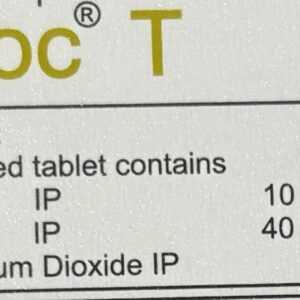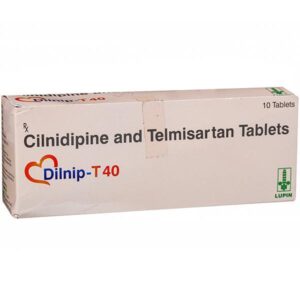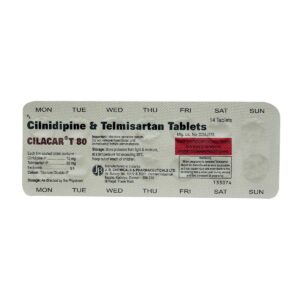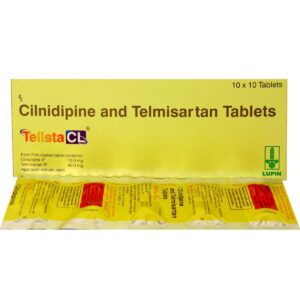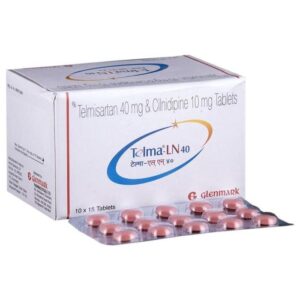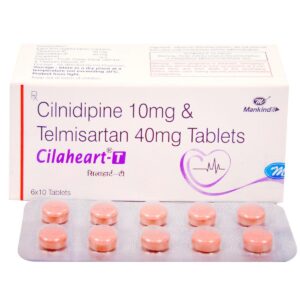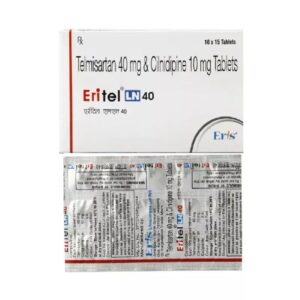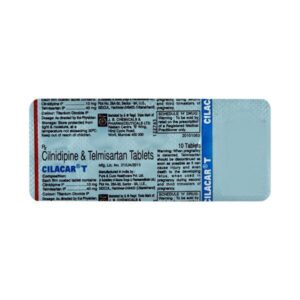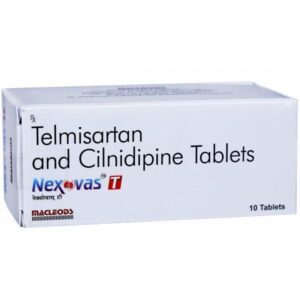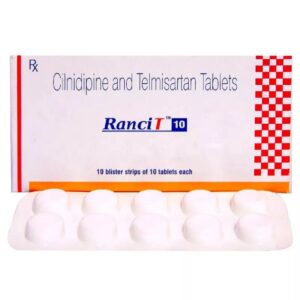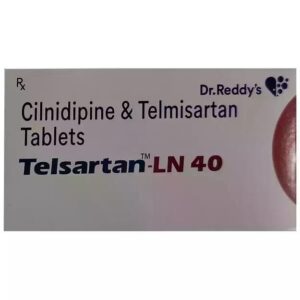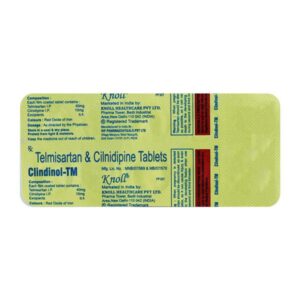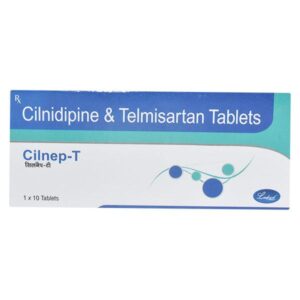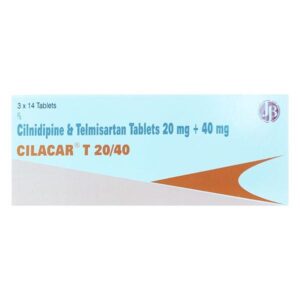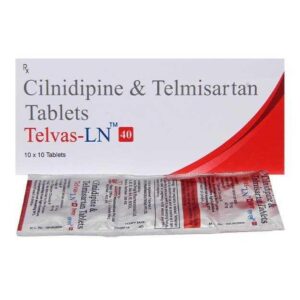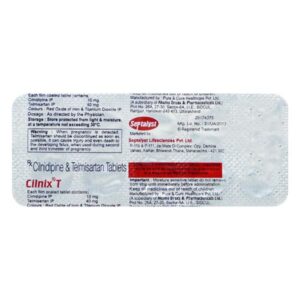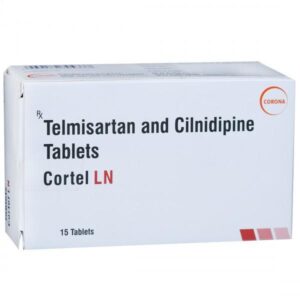TELMISARTAN + CILNIDIPINE
Telmisartan: Telmisartan is a medication primarily used to treat high blood pressure, also known as hypertension. It belongs to a class of drugs called angiotensin II receptor blockers (ARBs).
Its mechanism of action involves blocking the effects of a hormone called angiotensin II. Angiotensin II narrows blood vessels, leading to increased blood pressure. By blocking the angiotensin II receptor, telmisartan relaxes and widens the blood vessels, reducing blood pressure.
The usual starting dose for telmisartan is 40 mg once a day, which can be increased to a maximum of 80 mg per day if needed. It can be taken with or without food, and should be swallowed whole with a glass of water. It may take several weeks for the full effects of the medication to be seen.
Common side effects of telmisartan include dizziness, headache, fatigue, stomach pain, and diarrhea. Some rare but serious side effects may include allergic reactions, difficulty breathing, chest pain, and irregular heartbeat. It is important to seek medical attention immediately if any serious side effects occur.
Telmisartan is also used to reduce the risk of cardiovascular events such as heart attack or stroke in patients with high blood pressure and other risk factors. In addition, it can be used to treat diabetic kidney disease in patients with type 2 diabetes who are at risk of developing kidney problems.
It is important to note that telmisartan should not be used during pregnancy as it may harm the fetus. It is also not recommended for people with severe liver disease or bile duct obstruction.
As with any medication, it is essential to follow the prescribed dose and consult with a healthcare professional for personalized advice and to discuss any potential interactions with other medications or medical conditions.
Cilnidipine: Cilnidipine is a medication used to treat high blood pressure or hypertension. It belongs to the class of drugs called calcium channel blockers.
The mechanism of action of cilnidipine involves blocking the calcium channels in the smooth muscles of blood vessels, resulting in a relaxation of the blood vessels. This relaxation leads to a reduction in peripheral vascular resistance, which leads to a decrease in blood pressure. Cilnidipine also blocks N-type calcium channels in the central nervous system, which can help to reduce sympathetic nerve activity, further contributing to its antihypertensive effects.
The usual recommended starting dose of cilnidipine is 5 mg once daily, which can be increased to 10 mg once daily if needed. The dose may vary depending on individual patient response and the severity of hypertension. It is usually taken orally, with or without food.
As with any medication, cilnidipine can have side effects. Common side effects may include headache, dizziness, flushing, edema (swelling), nausea, and fatigue. These side effects are usually mild and tend to resolve on their own. In rare cases, cilnidipine can cause more severe side effects such as a rapid or irregular heartbeat, chest pain, or allergic reactions. It is important to seek medical attention if any unusual or severe side effects occur.
Cilnidipine may interact with other medications such as those used to treat heart conditions or liver problems, so it is important to inform your healthcare provider about all medications you are taking before starting cilnidipine. Additionally, cilnidipine is not recommended during pregnancy or breastfeeding.
It is important to remember that cilnidipine should only be taken under the supervision of a healthcare professional and that adherence to the prescribed dose and regular blood pressure monitoring are essential for the effective management of hypertension.

